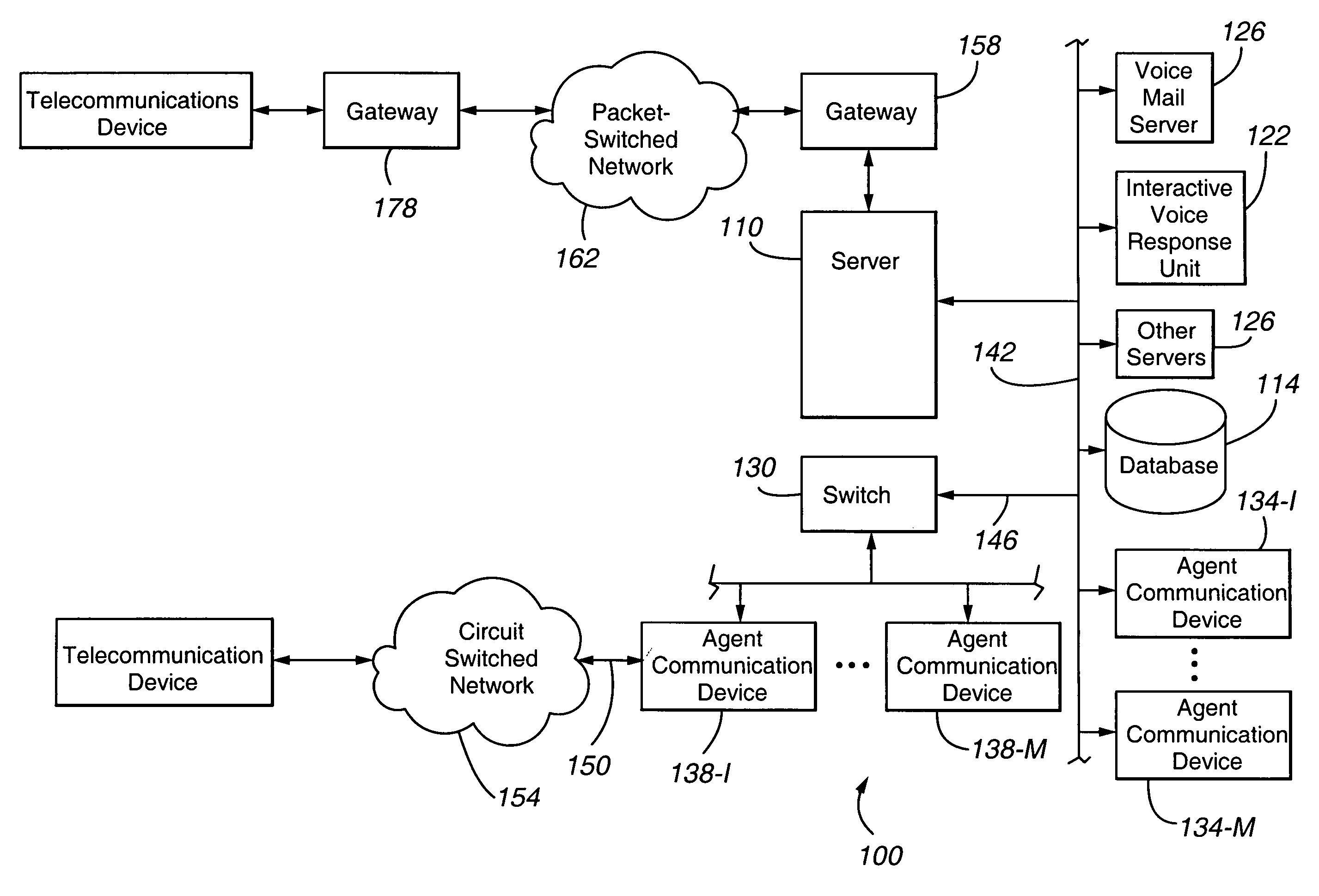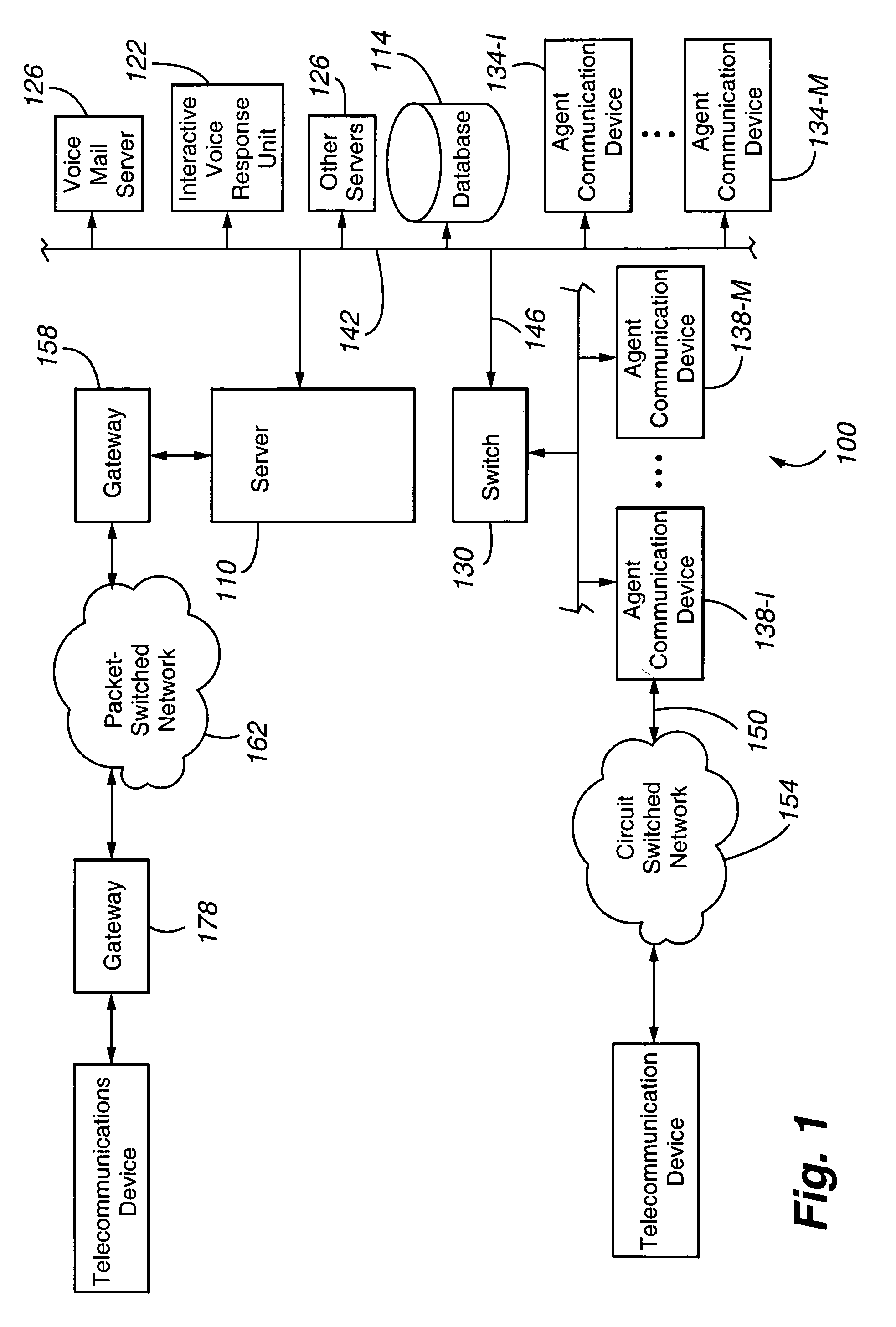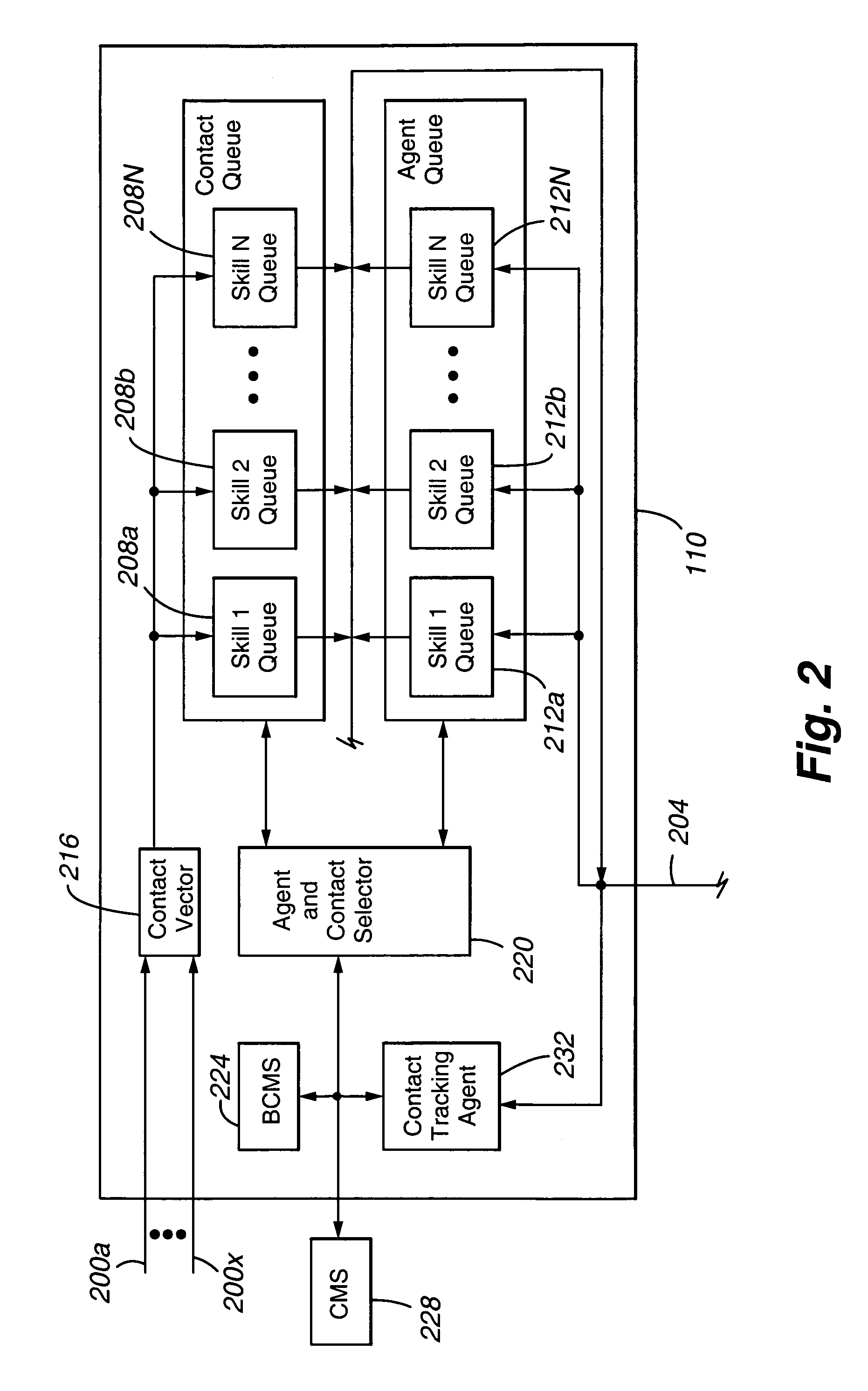Data model of participation in multi-channel and multi-party contacts
a data model and multi-channel technology, applied in the field of contact center management, can solve the problems of not supporting multi-channel contacts, unable to record, and existing data warehouse models in the data warehousing industry provide, at most, only limited information on contacts, etc., to achieve accurate multi-party tracking, less detail, and effective and/or inexpensive
- Summary
- Abstract
- Description
- Claims
- Application Information
AI Technical Summary
Benefits of technology
Problems solved by technology
Method used
Image
Examples
Embodiment Construction
[0026]The invention will be illustrated below in conjunction with an exemplary communication system. Although well suited for use with, e.g., a system having an ACD or other similar contact processing switch, the invention is not limited to use with any particular type of communication system switch or configuration of system elements. Those skilled in the art will recognize that the disclosed techniques may be used in any communication application in which it is desirable to provide improved contact processing.
[0027]FIG. 1 shows an illustrative embodiment of the present invention. A contact center 100 comprises a central server 110, a set of data stores or databases 114 containing contact or customer related information and other information that can enhance the value and efficiency of the contact processing, and a plurality of servers, namely a voice mail server 118, an Interactive Voice Response unit or IVR 122, and other servers 126, a switch 130, a plurality of working agents o...
PUM
 Login to View More
Login to View More Abstract
Description
Claims
Application Information
 Login to View More
Login to View More - R&D
- Intellectual Property
- Life Sciences
- Materials
- Tech Scout
- Unparalleled Data Quality
- Higher Quality Content
- 60% Fewer Hallucinations
Browse by: Latest US Patents, China's latest patents, Technical Efficacy Thesaurus, Application Domain, Technology Topic, Popular Technical Reports.
© 2025 PatSnap. All rights reserved.Legal|Privacy policy|Modern Slavery Act Transparency Statement|Sitemap|About US| Contact US: help@patsnap.com



